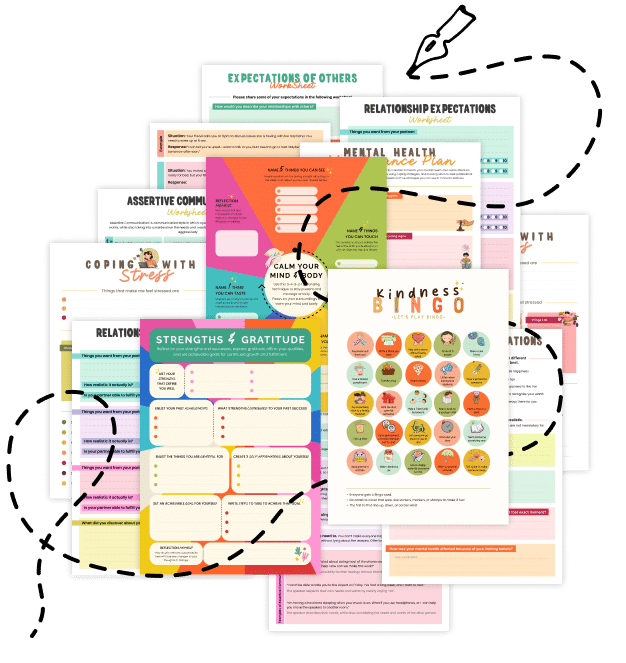20 Things You Should Know About Binaural Beat Therapy
Discover how listening to slightly different frequencies in each ear might boost focus, relaxation, or sleep. Dive into these 20 insights on Binaural Beat Therapy and how it could support mental well-being.
1. What Are Binaural Beats?
Binaural beats occur when you hear two slightly different sound frequencies in each ear. Your brain perceives a subtle, third “beat” frequency—a perceptual illusion—that can influence your brainwave state.
2. The Science Behind It
When each ear receives a distinct tone, the brain tries to reconcile them, creating a phantom “beat” that equals the difference between the two frequencies. For example, if your left ear hears 210 Hz and your right ear hears 220 Hz, you’ll perceive a 10 Hz binaural beat.
3. Brainwave Entrainment
Binaural beats are thought to promote brainwave entrainment, a phenomenon where external rhythms encourage your brainwaves to move into matching frequencies—such as alpha, beta, or theta ranges.
4. Potential Benefits
- Enhanced Relaxation: Slower binaural beats (in the theta or delta range) may induce calm states.
- Improved Focus: Slightly higher frequencies (beta range) can support alertness and concentration.
- Sleep Aid: Some people use low-frequency beats to ease into deeper sleep cycles.
5. Misconception: It’s a Magic Cure
Binaural beat therapy isn’t a miraculous fix for anxiety, insomnia, or ADHD. While some find it beneficial, evidence is still mixed. Results vary widely among individuals, and it often works best alongside other healthy habits.
6. How to Listen
You must use headphones or earbuds so each ear hears a distinct frequency. Regular speakers won’t typically create the separate channels your brain needs to perceive the binaural effect.
7. Popular Frequency Ranges
- Delta (0.1–4 Hz): Deep sleep, relaxation
- Theta (4–8 Hz): Meditation, creativity, daydreaming
- Alpha (8–12 Hz): Calm focus, light relaxation
- Beta (12–30 Hz): Alertness, concentration
- Gamma (30+ Hz): Higher-level cognition, though less commonly used in casual listening
8. Session Length and Consistency
Some people notice subtle relaxation within minutes; others may need 15–30 minutes of listening to feel an effect. Consistency often matters—like a “training” effect for your brain.
9. Role of Expectation
The placebo effect might play a role. If you believe binaural beats will help you relax or concentrate, that positive mindset can amplify the perceived benefits.
10. Pairing with Mindfulness
Combining binaural beats with mindful breathing or guided meditation can deepen the experience. You’re not just passively listening; you’re focusing on the sound while staying aware of your body and thoughts.
11. Skepticism in Research
Though many anecdotal reports claim benefits, scientific studies on binaural beats’ effectiveness offer mixed conclusions. Some show modest improvement in relaxation or attention; others find minimal changes compared to control groups.
12. Safe for Most Listeners
Binaural beats are generally non-invasive and safe for healthy individuals. However, those with certain neurological conditions, epilepsy, or heart issues should check with a healthcare professional before experimenting.
13. Commercial Apps and Tracks
Tons of apps and online recordings offer specialized binaural tracks for focus, sleep, anxiety relief, etc. While convenient, quality varies. Look for reputable producers who clearly state the frequencies used.
14. Volume and Comfort
Moderate volume is typically enough—loudness doesn’t enhance the effect and may harm your hearing. Comfort is key, especially if you’re listening for extended periods (e.g., to fall asleep).
15. Environment Matters
To maximize immersion, find a quiet, comfortable space. Lower distractions—like TV or loud chatter—so you can notice the subtleties of the binaural illusion more clearly.
16. Integrating with Daily Routines
- Morning Focus: Use beta-range tracks to kickstart your productivity.
- Afternoon Reset: A short alpha-wave session can combat midday slump.
- Bedtime Wind-Down: Theta or delta frequencies to gently guide you into sleep.
17. Avoid Multi-tasking
Binaural beats often work best when you pay some attention to them. Doing heavy mental tasks at the same time can dilute or overshadow the intended effect.
18. Personal Preferences
Some listeners enjoy nature sounds or soft music overlaying the beats; others prefer pure tones for a more direct experience. Experiment to find what resonates most.
19. Combining with Other Therapies
Binaural beats can be an adjunct to cognitive-behavioral therapy (CBT), mindfulness-based stress reduction (MBSR), or even certain types of creative arts therapy. Always consult professionals to ensure compatibility with your treatment plan.
20. Related Topics to Explore
- Neurobics: Novel brain exercises for keeping your mind agile.
- Dopamine Fasting: Resetting overstimulated brains for greater calm and focus.
- Chronotype Alignment: Tuning into your natural rhythms for improved alertness and rest.
- Brain Lateralization Exercises: Engaging both hemispheres for enhanced coordination and cognition.
Quick Tips for Trying Binaural Beats
- Start Simple: Pick a reputable app or a well-reviewed track on a streaming platform.
- Set an Intention: Identify whether you want relaxation, focus, or better sleep.
- Use Good Headphones: Ensure each ear gets its distinct frequency clearly.
- Limit External Noise: A quiet space or noise-cancelling headphones improve the effect.
- Stay Open-Minded: Observe how you feel—some notice effects quickly, others need practice.
Binaural Beat Therapy can be a fascinating tool for relaxation, focus, and even sleep enhancement, though it’s not a universal solution. Like any self-help approach, results depend on individual factors—from mindset to environment. If you’re curious, exploring binaural beats may add a gentle, sonic dimension to your wellness or productivity routine. Keep expectations realistic, listen responsibly, and combine them with healthy lifestyle habits for the best chance of success.
Share this post with anyone intrigued by sound-based methods for managing stress or boosting concentration. They might just find their new favorite audio companion!

